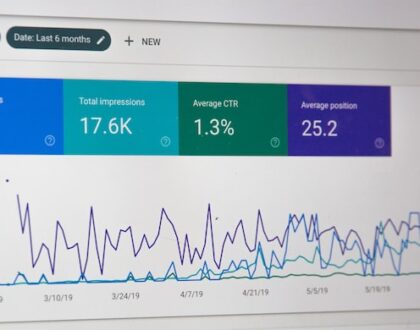How to Develop Trust and Loyalty in Retail Through Reception Marketing

by local
The consumer experience has completely transformed from anonymous transactional to individually helpful. To continue to be useful to consumers, retail brands must seamlessly integrate and be present throughout the customer journey. They must deliver genuine value in the right place at the right time.
Consumers base their purchasing decisions mostly on web research, rather than on product packaging, benefits, or customer service. How does that research look like? Searches for comparison guides, ingredient descriptions, brand and product reviews, and so on.
Brands that proactively deliver the information their audiences seek will develop long-term partnerships based on trust. This material should be brand-controlled to ensure that the desired story is communicated clearly and directly. This is especially true in the retail industry, because building trust entails providing relevant, detailed responses to customers’ issues and interests.
Because 87% of buyers use smartphones to research products in-store (pricing comparisons, user reviews, etc.), retail companies must be visible, helpful, and authentic online. Otherwise, they risk losing control of the story and attracting attention from competitors, influencers, and internet journalists.
Making a strong connection with the audience during times of need is the key to developing long-term brand affinity and loyalty. Let’s look at ways to make sure your brand is visible when and where it counts the most.
Your data is talking.
Consumers are leaving digital clues for you to follow, ranging from particular website response to the material they’re watching to social media comments and internet searches.
For example, you can determine the most frequently searched terms connected to your market. Consider the apparel retail industry, where popular inquiries include:
- “How to clean white sneakers.”
- “How to shrink jeans.”
- “What is business casual?”
Paying close attention to triggers, understanding related emotions, and using them into your content marketing strategy are critical to retail growth.
A marketing shift that moves products.
The proactive strategy, known as reception marketing, uses easily available consumer data to better understand consumers, and then converts those insights into relevant content provided when they need it.
But how about disruption marketing? Most individuals dislike being interrupted, especially by messages that give little value. What about permission marketing, a long-time retail marketing favorite? It’s a disconnected, transactional strategy that’s quickly fading.
With reception marketing, your business can establish itself as a reliable source of authoritative, valuable content for customers, even when they prefer to use Google instead of store workers. Are you prepared to deliver the answers that people are seeking?
OAO possesses the potential for growth.
You may supply the answers consumers want by utilizing owned asset optimization (OAO), the quintessential reception marketing tactic. OAO enables retail brands to assist customers in making sense of the overwhelming amount of information and options available.
Establishing your brand as a trustworthy publisher in its own right is a tried-and-true, scalable approach of connecting with customers, and it is now a very real prospect with OAO. Your brand position implies you have industry knowledge, whereas OAO confirms you now have the data and tools to give exactly what customers desire.
Allowing customer behavior data to influence what content you prioritize so that you are best able to handle real-world user problems is a game-changing retail strategy. Your visitors only care about “their thing.” So make your material on what they want to know, rather than a broad message that addresses everyone and no one at once. OAO allows you to regularly offer this relevant, helpful content throughout your network of assets, beginning with owned media like your website.
Then optimize it for visibility and use. Analyze user behavior on a regular basis and change methods based on where your target demographic spends time with your business. Allow such findings to generate incremental changes that result in long-term brand loyalty and conversion. This will improve cross-channel value by ensuring that your owned material informs the information published on external platforms.
So, how do merchants use this strategy?
Putting the OAO to work in retail.
Retail brands have a golden opportunity. When a consumer searches for “business casual” or “how to dress for an interview,” they are likely to find instructional content that walks them through clothing for various professional industries, body shapes, and event types.
You could launch an interview series, sharing anecdotes about your clothes in action in the office or on the field, as well as a series of brand-owned videos promoting the versatility of their styles. You might create a guide or lookbook to inspire people’ own looks.
These resources help to establish your brand as a reliable reference early in the purchasing process. You’ve set the basis in the consumer’s mind with the expertise, assistance, and value you offer. These associations will eventually pay off when buyers are looking for a new product.
These owned bits of helpful, consumer-relevant information can then be used in channels with less control but greater visibility, such as social media, public relations, advertising, and news. This helps you grow your footprint while also exerting positive influence over the story surrounding your brand in the wild.
Recommended Posts

Can Attentiveness Actually Drive Campaign Success?
November 8, 2024

Marketers Must Create Time for Time Management
October 25, 2024

Maximizing Revenue Growth Through Sales and Marketing Alignment
October 11, 2024
